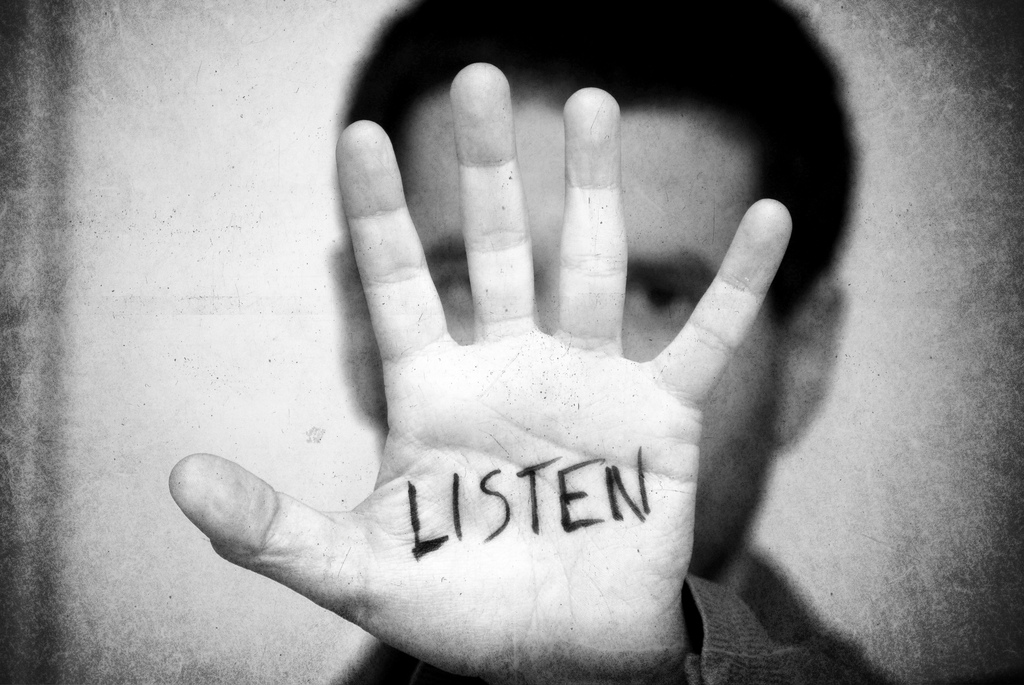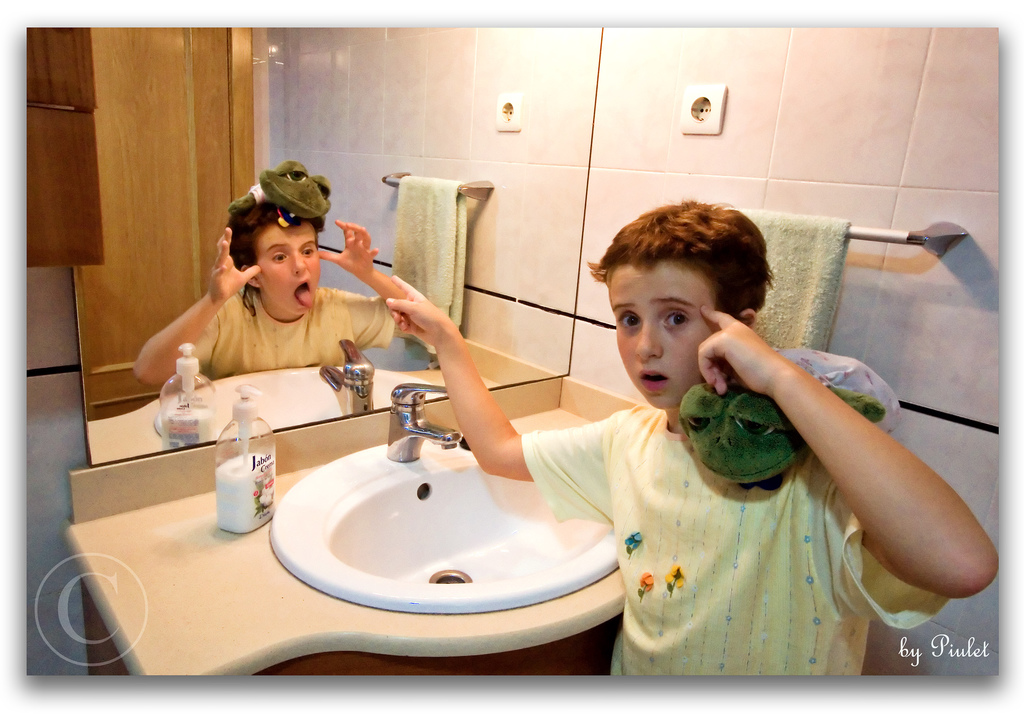7 Tips Caregivers Can Instantly Use To Deepen Rapport With Their Clients
“There is no exercise better for the heart than reaching down and lifting people up.” -John Holmes
I don’t think anyone would argue with the statement that care-giving is an art form. It takes creativity, insight and compassion to effectively care for those in need. Often times, it is not the “hard” skills the caregivers struggle with such as transfers, bowel programs and checking vitals. “Soft” skills such as rapport building, listening skills and knowing how to break the ice can be an even greater challenge.
This guide is designed to help you improve your rapport building skills so that you will be able to deepen the relationship with your current client. It will also help you learn how to quickly establish a baseline of rapport with new clients.
1. Break The Ice: What To Say When You Don’t Know What To Say
“The single biggest problem in communication is the illusion that it has taken place.” George Bernard Shaw
Have you ever found yourself in this situation? You are sitting down with a new client and the dreaded awkward silence drifts down upon you. You are racking your brain with possible conversational topics but are drawing a blank. What should you say? How do you break the ice with a new client? Below are a few techniques to help steer clear from the awkward silences that can sneak up on you.
A. Compliment Them About Something
Everyone likes a compliment. Find something specific that you appreciate about your client and tell them about it. This could be their outfit, hairdo, jewelry or other item. You could also compliment something you appreciate about their home. Be genuine about it. Do they have a beautiful dresser in the corner? Is their wheelchair state-of-the-art? There are endless areas of their life that you can find to compliment. If one doesn’t work to open a conversation, find another.
B. Take Interest in Topics They Enjoy
If you don’t know what to say when you are with a client look around their house/room and find pictures or other objects that may have significant meaning. Ask your client about them. For example, if you see a picture of them on a boat, ask them about it. If you look hard enough you will be able to learn about some of their interests just from observing. A few months ago I met one particular client of ours we’ll call James. I was trying to make conversation and he wasn’t giving me the time of day. Then I noticed a flute in the corner and I started talking about it and told him how much I enjoyed music. This instantly brought him out of his shell and we proceeded to have an hour long conversation about music.
C. Ask GOOD Questions
Questions can be used as a tool to build relationships. However, it must be done right. When you ask questions that are too probing or pointed it can be seen as a relationship killer, especially if a baseline level of rapport has not been built.
Follow the below important points when using questions to help build rapport with your client:
1. News/Sports/Weather
N.S.W. questions are safe and good to ask when you don’t know a client very well. They can be used to break the ice and create common ground. Remember that the purpose of asking questions about news, for example, is not so you can get your perspective across.
The purpose is to establish a relationship. You can’t do this through disagreement.
A relationship is like a flower. When it is just a seedling the roots are shallow. Any contention can rip it out of the ground. When you talk about news, sports or weather… be agreeable. Trust will be the result.
2. Going Deeper
Your central purpose for having a good relationship with your client is to provide quality care. You don’t necessarily need to ask very personal questions. If they share personal information with you that is ok. Be polite and listen. But don’t intentionally go too deep, too fast.
2. Be Professional AND Personal
“My idea of professionalism is probably a lot of people’s idea of obsession.” David Fincher
Knowing what to share with a client and what not to share with a client can often be tricky. You will be spending a lot of time with your client and probably develop a friendship with them. However, maintaining boundaries and professionalism is just as important. When a caregiver shares too much information they can often jeopardize their professionalism. The below sections will give you a general idea of items that you can share and what you should not share. You will need to determine for yourself how much information is the right amount to share.
a. What is ok to share
- Name
- Why you entered the field
- How long you have been in the field
- Hobbies
- Interests
What is not ok to share…
- Where you live
- Personal health problems
- Personal relationship or family problems
3. Don’t Fight Fire with Fire
“You’ll catch more flies with honey than with vinegar.” -Unknown
Individuals with traumatic brain injury or closed head injury often have the frontal lobe of their brains affected due to the fact that it is located next to the front of the skull. This area of the brain controls many functions such as motor function, problem solving, spontaneity, memory and language. It also controls behavioral responses to the environment. When it is injured in a person there is typically a greater likelihood of risk taking behavior as well as non-compliance with rules. This is to be expected in clients with TBI. So now that you know this information how do you handle it? Don’t fight fire with fire. Use the below techniques to increase the cooperativeness of your clients’.
a. Be Patient
Patience is going to be your most important trait when you are dealing with an uncooperative client. Realize that they are not being uncooperative intentionally to try to aggravate you. Their injury has brought it about and they can’t necessarily control their actions. When you are trying to get them to cooperative give yourself extra time and be patient.
b. Go Beyond Reasoning
An individual with a TBI may not have the same reasoning ability that you and I have. Their long term reasoning ability may have been affected so they will not understand rewards that you offer.
c. Use Your “Tool Belt”
Your tool belt may be your lifesaver when your client is being uncooperative. The tool belt is a metaphor for having tricks for dealing with clients. Normal tool belts have a hammer, screw drivers, tape measure, etc. Your “caregiver tool belt” will have tools that are “soft skills” such as building rapport, motivating and encouraging, being professional, etc.
However, your tool belt goes beyond having general caregiver skills. Your tool belt will need to be adjusted depending on the client you are working with. Not all tools will work equally well or in the same way as others for every client. Over time you will learn to find the right tools for the right client.
For example, I have a client that frequently gets anxious. Yet, if you read Shel Silverstein books like “Where The Sidewalk Ends” he will calm down and cooperate. This is because he enjoys these books. When caregivers work with this client it is simply one of the many tools they must use when working with him. Be proactive in discovering tools that work well with your clients. Ask other caregivers if they have encountered situation “X” and how they deal with it. The more tools you have for working with your client the better.
4. Be A Good Listener
“One of the most sincere forms of respect is actually listening to what another has to say.” -Bryant H. McGill
Listening effectively is one of the most important “soft” skills of a caregiver. When you truly listen to a client you will learn some very deep and personal aspects of their lives. This not only helps to build rapport with the client but also helps you become aware of possible signs of distress. The below tips will help you be a good listener. Follow them closely and you will be doing your client a tremendous service and be building deep rapport with them.
Tip 1: Maintain Eye Contact
When you are listening to a client make sure that you look them in the eye. Pretend that you are listening with your eyes and every time you look away you can’t hear them. When someone gives you eye contact when you are talking do you feel more or less appreciated? I am guessing that you feel more appreciated. Do the same for those that are talking to you.
Tip 2: Adjust Your Body As If You Were Looking Into A Mirror
This is a great technique that will create rapport with your client and show them that you are listening. Pretend that you were looking in a mirror when you are listening. This techique is called “mirroring”. If they are leaning forward than you should lean forward. If they are leaning back than you should lean back a little bit.
Now you don’t want to be obvious with this. You won’t be mirroring every movement they make. Also, you won’t want to change your posture at the exact time that they do it. Wait a few seconds before changing your posture, again to make it not obvious what you are doing.
Tip 3: Maintain An Open Posture
This tip contradicts the one just above it. Most often the best posture to have when you are listening is an open, forward leaning posture. If you are sitting this means that you do not have your legs or arms crossed. It means your body is square to them and you are leaning forward just a bit. Crossing your arms and legs and facing them at an angle tells them that you are not interested in what they have to say. Facing them with an open posture tells them that you are open to receiving what they have to say.
Tip 4: Nod Your Head
When a speaker is talking they are often looking for cues from the listener to verify they they are understanding what they are saying. Nodding your head is an effective tool for letting them know that you understand and are effectively receiving what is being said.
Tip 5: Pay Attention
This may be the most important tip of all. When it comes down to it it doesn’t matter whether you are maintaining eye contact or nodding your head when you are not paying attention to the speaker. Listening is an active process and it requires energy and attention in order to understand and remember what the speaker is saying. While someone is talking don’t be distracted or let your mind wander. Keep your mind fixed on what your client is saying. Listen attentively.
If you are like me and often forget what a client says an hour or so after they say it, here is a technique that will help. While they are speaking, create a structure of what they are saying in your head. Pretend that you have a chalkboard or a piece of paper in your mind and organize the speakers thoughts in your head in a way that makes sense to you. Use numbers, letters, bullet points, etc. in your outline. Sometimes following someone’s thoughts can be difficult but if you work toward organizing their thoughts in your own mind you’ll be able to not only understand them better but also remember what they have said.
Tip 6: Clarify
Even though you may be listening with your eyes, nodding your head and paying close attention to what your client is saying you still may not understand fully what they are talking about. That’s why clarifying is important. Ask you client if you can repeat back what they have said so that you can be sure you heard them correctly. Then in a few sentences repeat back what was said. They can then correct you if you have made an error.
Tip 7: Ask Relevant Questions
This technique will help you dive deeper into important subjects. When you ask relevant questions it shows that you are not only listening but also interested in what they have to say. Think about the question before you ask it so that you can be sure that it wasn’t already answered. Make sure it is relevant to the conversation.
5. Be Courteous & Respectful
“Really big people are, above everything else, courteous, considerate and generous – not just to some people in some circumstances – but to everyone all the time.” -Thomas J. Watson
The word “courteous” means: “to be polite, respectful, or considerate in manner.” Professional caregivers are all of these. This means that you take your shoes off at the door (unless they tell you not to), not putting your feet up on their coffee table (like what I did one time and was asked off the case the next day), leaving dishes out or anything else that could be considered discourteous.
Remember that their house is not your house. Treat it like a work area because it is. Be courteous.
6. Dress for Success
“I think that when you get dressed in the morning, sometimes you’re really making a decision about your behavior for the day. Like if you put on flipflops, you’re saying: ‘Hope I don’t get chased today.’ ‘Be nice to people in sneakers.’ -Demetri Martin
The best option for proper dress is khaki pants and collared shirt or your scrubs. Your client may go out in the community, however, so scrubs may not be the best option.
Some of your clients may prefer that you dress up for certain occasions or dress down because it keeps them at ease. There are a wide variety of desires for each client.
Be willing to accommodate their desires so they feel comfortable.
7. Be Positive
“Few things in the world are more powerful than a positive push. A smile. A world of optimism and hope. A ‘you can do it’ when things are tough.” – Richard M. DeVos
Dale Carnegie wrote, “How To Win Friends and Influence People” and once said that you should never criticize, condemn or complain.
Being positive is a much better way of working with your client than committing one of the three “C’s”. It creates for a more enjoyable environment for both you and the client. No one likes to be around someone that complains all the time. So before you criticize or complain about someone realize that if you were born under that person’s same situation you would probably do the same thing.
Well there you have it my fellow caregivers. These seven tips can help you build tremendous rapport with your clients. Remember that your words have power. They can either build up or tear down.
Choose your words and actions wisely and you’ll be well on your way to mastering the soft side of caregiving.
-Todd








